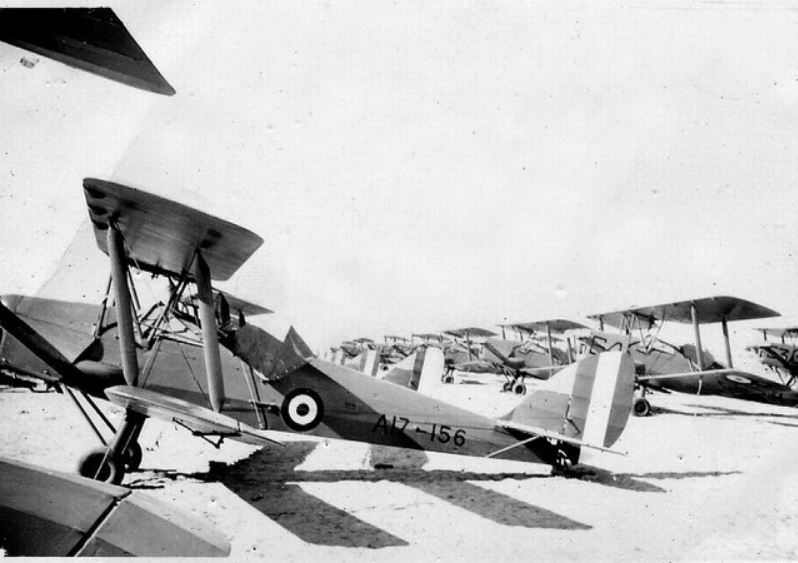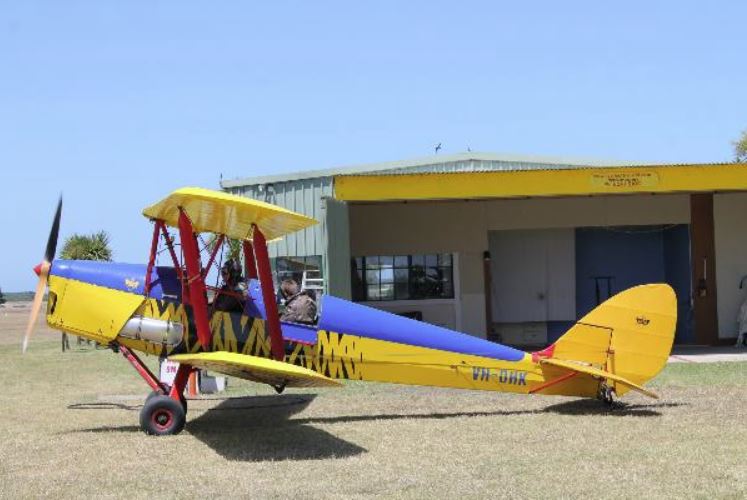Difference between revisions of "De Havilland DH.82A Tiger Moth"
From Our Contribution
(→Aircrew) |
|||
| (10 intermediate revisions by the same user not shown) | |||
| Line 44: | Line 44: | ||
*Bombs: 8 x 8 kg | *Bombs: 8 x 8 kg | ||
| − | == | + | ==Aircrew== |
| − | ===No.9 Elementary Flying Training School Cunderdin=== | + | ===[[No. 2 Elementary Flying Training School RAAF]]=== |
| − | *[[Clifford Stanley Douglas]] 9 Jan - 10 Mar 1941 | + | *† [[Roy Thomas Aston Wallis]] 12 Dec 1940 - 10 Feb 1941 |
| + | |||
| + | ===[[No. 9 Elementary Flying Training School RAAF]] Cunderdin=== | ||
| + | * [[Clifford Stanley Douglas]] 9 Jan - 10 Mar 1941 | ||
| + | * [[Roy Joseph Smith]] 2 Apr - 2 Jun 1941 | ||
| + | * † [[Frank Keith Morcombe DFC]] 3 Apr - 29 Mar 1941 | ||
| + | * † [[Greer Winton Ottaway]] 7 Jan - 13 Mar 1943 | ||
| + | * [[George Henry Millett]] 26 May - 2 Aug 1943 | ||
| + | |||
| + | ==Ground Crew== | ||
| + | ===[[No. 1 Operational Training Unit RAAF]]=== | ||
| + | *[[Francis Neal McGurk]] 22 May - 13 Sep 1943 | ||
[[category:Aircraft]] | [[category:Aircraft]] | ||
Latest revision as of 00:52, 20 June 2022
Contents
Remarks
Based on the earlier, smaller de Havilland Gipsy Moth and designed as both a trainer and for touring, flying club and private aviation. In Oct 1931 the first Tiger Moth made its maiden flight, and shortly after the construction of the first 35 production aircraft for the RAF commenced, along with two float variations.
Quickly established as a military trainer orders were so strong as to make domestic private orders difficult to fill until 1937 when production caught up with demand. Variants followed as use and experience with the aircraft increased, and by the outbreak of war 1,424 aircraft had been constructed, with nearly 300 in service with the RAF. Overseas production had commenced in 1937.
The DH.82A tiger Moth was powered by the de Havilland Gipsy Major 1 engine, which produced 130 hp. In the early days of the war, with inadequate coastal patrol aircraft, the Tiger Moth was used for coastal patrols, working in pairs, and armed only with a Very pistol.
Following completion of the war, large numbers of surplus Tiger Moths were made available for sale to flying clubs and individuals. There were relatively few new light aircraft being manufactured at the time, and with the type being relatively inexpensive to operate, the Tiger Moth was met with an enthusiastic reception across the civil market. IN addition it was put to use in new roles including aerial advertising, aerial ambulance, aerobatic performer, crop dusting and glider tug work.
General characteristics
- Crew: two
- Length: 7.34 m
- Wingspan: 8.94 m
- Height: 2.68 m
- Empty weight: 506 kg
- Max takeoff weight: 828 kg
- Powerplant: 1 x de Havilland Gipsy major 130 hp
- Maximum speed: 175 km/hr at 300 m
- Range: 486 km
- Service ceiling: 4,145 m
- Armament
- Guns:
- Bombs: 8 x 8 kg
Aircrew
No. 2 Elementary Flying Training School RAAF
- † Roy Thomas Aston Wallis 12 Dec 1940 - 10 Feb 1941
No. 9 Elementary Flying Training School RAAF Cunderdin
- Clifford Stanley Douglas 9 Jan - 10 Mar 1941
- Roy Joseph Smith 2 Apr - 2 Jun 1941
- † Frank Keith Morcombe DFC 3 Apr - 29 Mar 1941
- † Greer Winton Ottaway 7 Jan - 13 Mar 1943
- George Henry Millett 26 May - 2 Aug 1943
Ground Crew
No. 1 Operational Training Unit RAAF
- Francis Neal McGurk 22 May - 13 Sep 1943

